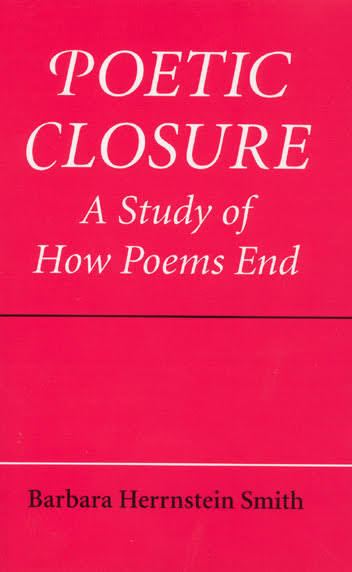8.2 /10 1 Votes8.2
4.1/5 AbeBooks | 4.1/5 Goodreads Originally published 1968 | |||||||||||||||||||||||||||||||||
 | ||||||||||||||||||||||||||||||||||
Similar Belief and resistance, Scandalous knowledge, Contingencies of value, Aircraft Stories, Evolution's Eye | ||||||||||||||||||||||||||||||||||
Poetic Closure: A Study of How Poems End — ISBN 0-226-76343-9 — is a book by Barbara Herrnstein Smith, which was published by the University of Chicago Press in 1968. The division between form and content in the way the book is structured has been criticized.[1]
Contents
Structure of the book
The book addresses the following topics:
Structural closure
Herrnstein Smith observes that regularity — such as the regular repetition of lines of iambic tetrameter — builds the expectation of continuance, and the desire for closure. Examples of how a sense of closure may be achieved include:
Wyatt's practice of varying the final repetition of a refrain — as in the poem 'Forget not yet' — is cited as an example of the first kind.
Other examples of closure brought about by structural means include: where the last stanza repeats (or closely echoes) the first stanza, thereby 'framing' the entire poem (such as in Wyatt's 'My Lute Awake!'); where enjambent is used in blank verse, and only at the close does a line end correspond to a full stop (the example given is from the conclusion of Book XI of Paradise Lost).
